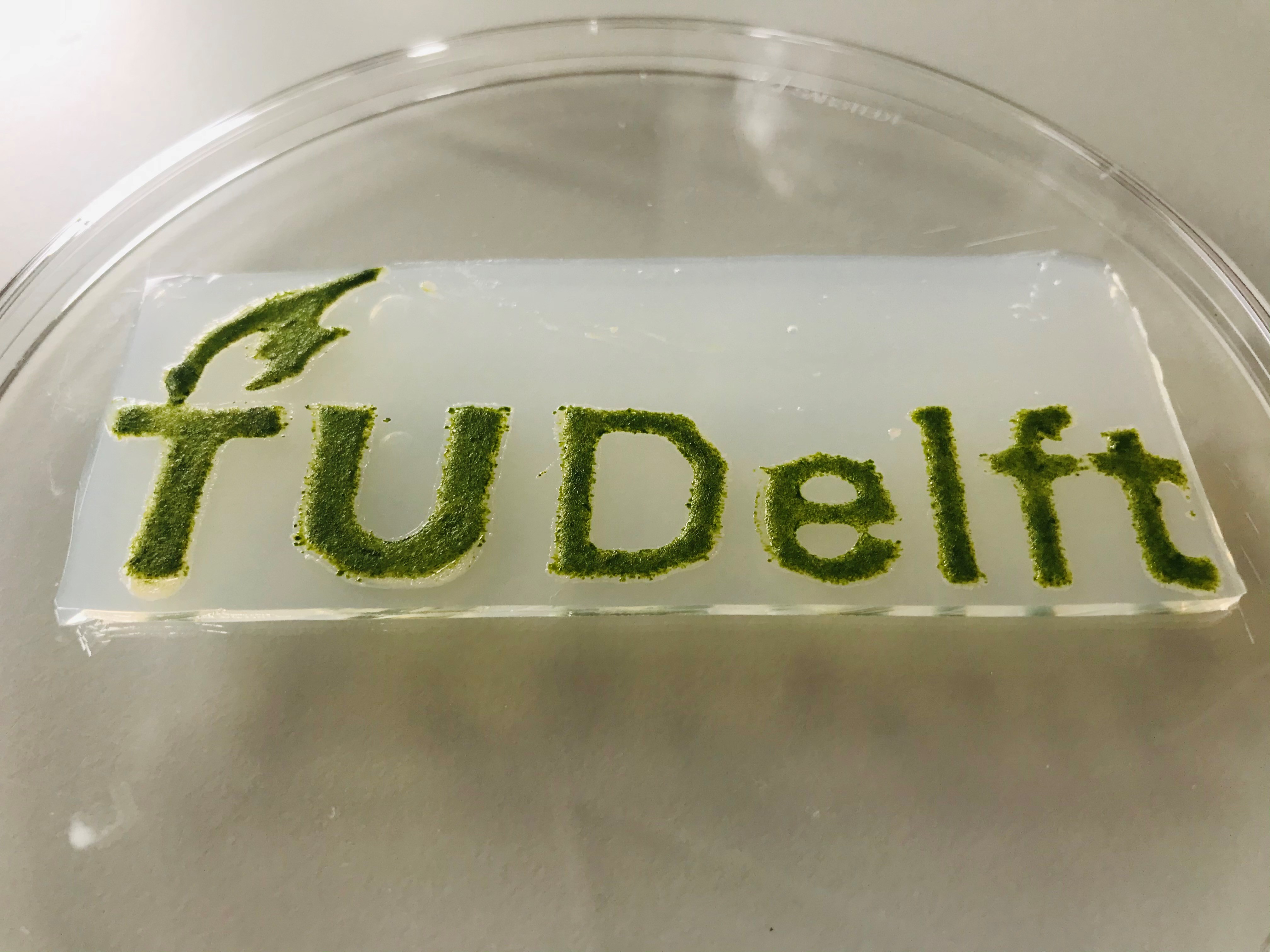A scarf made from algae
At the end of April, TU Delft researchers were successful in printing a living photosynthetic material in 3D. It was the result of collaboration between the research group run by associate professor Marie-Eve Aubin-Tam from the Bionanoscience department (Applied Sciences) and Prof. Elvin Karana from the department of Sustainable Design Engineering (IDE). They printed living micro-algae on ‘paper’ made from non-living bacterial cellulose and created a responsive material that absorbs CO2 and produces oxygen.
Responsive materials are able to adapt and communicate information about their environment. An example involves piezoelectric crystals that produce electrical voltage when placed under pressure or materials that change colour as a result of humidity or temperature.
Karana is seeing increasing demand for responsive materials in the design world. “The materials are already produced chemically, but that consumes energy and causes toxic waste. Working with living organisms that perceive and respond to external signals is an alternative. A torch can be made using bioluminescent algae. When you shake the algae, they produce enough light to find your way in the dark. Rather than electricity, they need food.”
Aubin-Tam uses bacteria and micro-algae to produce materials. The first material her research group replicated successfully was mother of pearl. Aubin-Tam: “Mother of pearl is 95% brittle calcium carbonate. But it’s incredibly strong because it’s made up of layers of calcium carbonate alternating with biopolymers.” Masonry can be produced by alternating bacteria that secrete layers of calcium carbonate with bacteria that secrete a polymer.
A similar principle is used to make living photosynthetic material with the 3D printer. Karana: “Combining living bacteria and bacterial cellulose in a unique way enables us to create a robust material.”
Students used the material to print a living scarf. Karana: “Although our living material is not yet as flexible as textile, we’re working to improve these properties.” Karana also envisages the material being used for curtains or cushions. “People may have some prejudices about wearing living material as clothes”, thinks Karana. “Our research group is also researching the social dimension of living materials."
Aubin-Tam also wants to explore how the material responds to light. Aubin-Tam: “The living cells use flagella (whip-like appendages that propel single-cell organisms, ed.) to swim. By shining light at the cells, we can repel or attract them. If we prove successful in influencing the position of the algae in the material, we can create a material that’s both responsive and dynamic.”
Hard-soft
“When there’s a tumour in the bone, we replace the bone with a large, hard and porous implant”, explains assistant professor Mohammad Mirzaali from the biomechanical engineering department (3mE). “It’s all about ensuring that an implant is strong enough to replace the bone, but also soft to prevent damage to the skin.” Creating the transition from hard to soft material is difficult. Mirzaali is seeking inspiration from hard-soft transitions in human joints.
Mirzaali is working on various biomimetic approaches and uses 3D printing techniques for metal and polymers. “Combining the two techniques is a challenge, because metal and polymers need different printing conditions.” Mirzaali is designing a hierarchical and geometric structure to enable the connection between metal and polymers.
Nature itself is more complex than the hard-soft transitions that Mirzaali is developing. The resolution of current 3D printers does not yet enable an exact replication of nature. Even if it is successful on a small scale, it will be extremely time-consuming and difficult to upscale it. Mirzaali: “At times, you have to sacrifice some of the complexity to achieve a workable product.”
